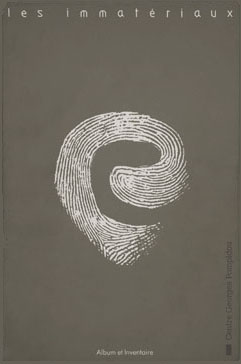Julia Vaingurt: Wonderlands of the Avant-Garde: Technology and the Arts in Russia of the 1920s (2013)
Filed under book | Tags: · 1920s, aesthetics, architecture, art, art history, avant-garde, biomechanics, body, cinema, communism, constructivism, design, literature, machine, politics, russia, science fiction, sexuality, socialism, soviet union, technē, technology, theatre

“In postrevolutionary Russia, as the Soviet government was initiating a program of rapid industrialization, avant-garde artists declared their intent to serve the nascent state and to transform life in accordance with their aesthetic designs. In spite of their professed utilitarianism, however, most avant-gardists created works that can hardly be regarded as practical instruments of societal transformation. Exploring this paradox, Vaingurt claims that the artists’ investment of technology with aesthetics prevented their creations from being fully conscripted into the arsenal of political hegemony. The purposes of avant-garde technologies, she contends, are contemplative rather than constructive. Looking at Meyerhold’s theater, Tatlin’s and Khlebnikov’s architectural designs, Mayakovsky’s writings, and other works from the period, Vaingurt offers an innovative reading of an exceptionally complex moment in the formation of Soviet culture.”
Publisher Northwestern University Press, 2013
SRLT series
ISBN 0810128942, 9780810128941
322 pages
via Sorin
Review: Boris Dralyuk (NEP, 2013), Tim Harte (Slavic Review, 2014).
PDF (updated on 2022-11-12)
See also the science-fiction film Aelita, Queen of Mars, dir. Yakov Protazanov, 1924, 111 min, based on Tolstoy’s novel.
Comments (2)Les Immatériaux: Épreuves d’écriture & Album et Inventaire (1985) [French]
Filed under catalogue | Tags: · architecture, art, cinema, code, computer art, design, industrial design, installation art, kinetic art, language, machine, painting, photography, robotics, sculpture, simulation, writing

“Les Immatériaux was a landmark exhibition co-curated in 1985 for the Centre Georges Pompidou in Paris by philosopher Jean-François Lyotard and design historian and theorist Thierry Chaput, attracting more than 200,000 visitors during the 15 weeks of its duration.
The exhibition brought together a striking variety of objects, ranging from the latest industrial robots and personal computers, to holograms, interactive sound installations, and 3D cinema, along with paintings, photographs and sculptures (the latter ranging from an Ancient Egyptian low-relief to works by Dan Graham, Joseph Kosuth and Giovanni Anselmo). The Centre de Création Industrielle (CCI) – the more ‘sociological’ entity devoted to architecture and design within the Centre Pompidou, which initiated Les Immatériaux – had been planning an exhibition on new industrial materials since at least 1982. Variously titled Création et matériaux nouveaux, Matériau et création, Matériaux nouveaux et création, and, in its last form, La Matière dans tous ses états, this exhibition, first scheduled to take place in 1984, already contained many of the innovative features that found their way into Les Immatériaux.
These features included an emphasis on language as matter, the immateriality of advanced technological materials (from textiles to plastics and holography), exhibits devoted to recent technological developments in food, architecture, music and video, and an experimental catalogue produced using computers. The earlier versions of the exhibition also involved many of the future protagonists of Les Immatériaux, such as Jean-Louis Boissier (among several other faculty members of Université Paris VIII, where Lyotard was teaching at the time) and Eve Ritscher (a London-based consultant on holography). Furthermore, Les Immatériaux benefited from projects pursued concurrently by other groups within the Pompidou which joined Lyotard’s and Chaput’s project when it was discovered that their themes overlapped. Thus, an exhibition project on music videos initiated by the Musée national d’art moderne and a project on electro-acoustic music developed by IRCAM (Institut de Recherche et de Coordination Acoustique/Musique) were incorporated into it.” (from a study by Anthony Hudek, 2009, edited)
Volume 1 contains an experimental glossary of 50 terms with contributions by twenty-six authors, writers, scientists, artists and philosophers including Nanni Balestrini, Michel Butor, François Châtelet, Jacques Derrida, Bruno Latour and Isabelle Stengers. Volume 2 reproduces the works exhibited.
Publisher Centre Georges Pompidou, Paris, March 1985
ISBN 2858502994 (I), 2858503001 (II)
263 (I) and 142 (nonpaginated A4) pages (II)
Épreuves d’écriture (Volume 1, 11 MB, added on 2014-7-30 via Norkhat)
Album et Inventaire (Volume 2, 103 MB, via Arts des nouveaux médias blog of Jean-Louis Boissier)
See also other documents and literature about the exhibition (Monoskop wiki).
Pavle Levi: Cinema by Other Means (2012–) [EN, SR]
Filed under book | Tags: · antifilm, art, art history, avant-garde, cinema, dada, experimental film, film, film history, film theory, lettrism, montage, structural film, surrealism, technology, yugoslavia

“Cinema by Other Means explores avant-garde endeavors to practice the cinema by using the materials and the techniques different from those commonly associated with the cinematographic apparatus. Using examples from both the historical and the post-war avant-garde — Dada, Surrealism, Lettrism, “structural-materialist” film, and more — Pavle Levi reveals a range of peculiar and imaginative ways in which filmmakers, artists, and writers have pondered and created, performed and transformed, the “movies” with or without directly grounding their work in the materials of film. The study considers artists and theorists from all over Europe — France, Italy, Soviet Union, Germany, Hungary — but it particularly foregrounds the context of the Yugoslav avant-garde. Cinema by Other Means offers the English-language reader a thorough explication of an assortment of distinctly Yugoslav artistic phenomena, such as the Zenithist cine-writings of the 1920s, the proto-structural Antifilm movement of the early 1960s, and the “ortho-dialectical” film-poetry of the 1970s.”
Publisher Oxford University Press, 2012
ISBN 019984142X, 9780199841424
224 pages
Reviews: Matilde Nardelli (Oxford Art Journal, 2013), Greg DeCuir (Jump Cut, 2013), Bojan Jovic (Biblid, 2013, SR).
Exh. review: De Cuir (ARTMargins, 2013).
Cinema by Other Means (English, 2012, updated on 2024-4-26)
Kino drugim sredstvima (Serbian, trans. Đorđe Tomić, 2013, added on 2024-4-26)

